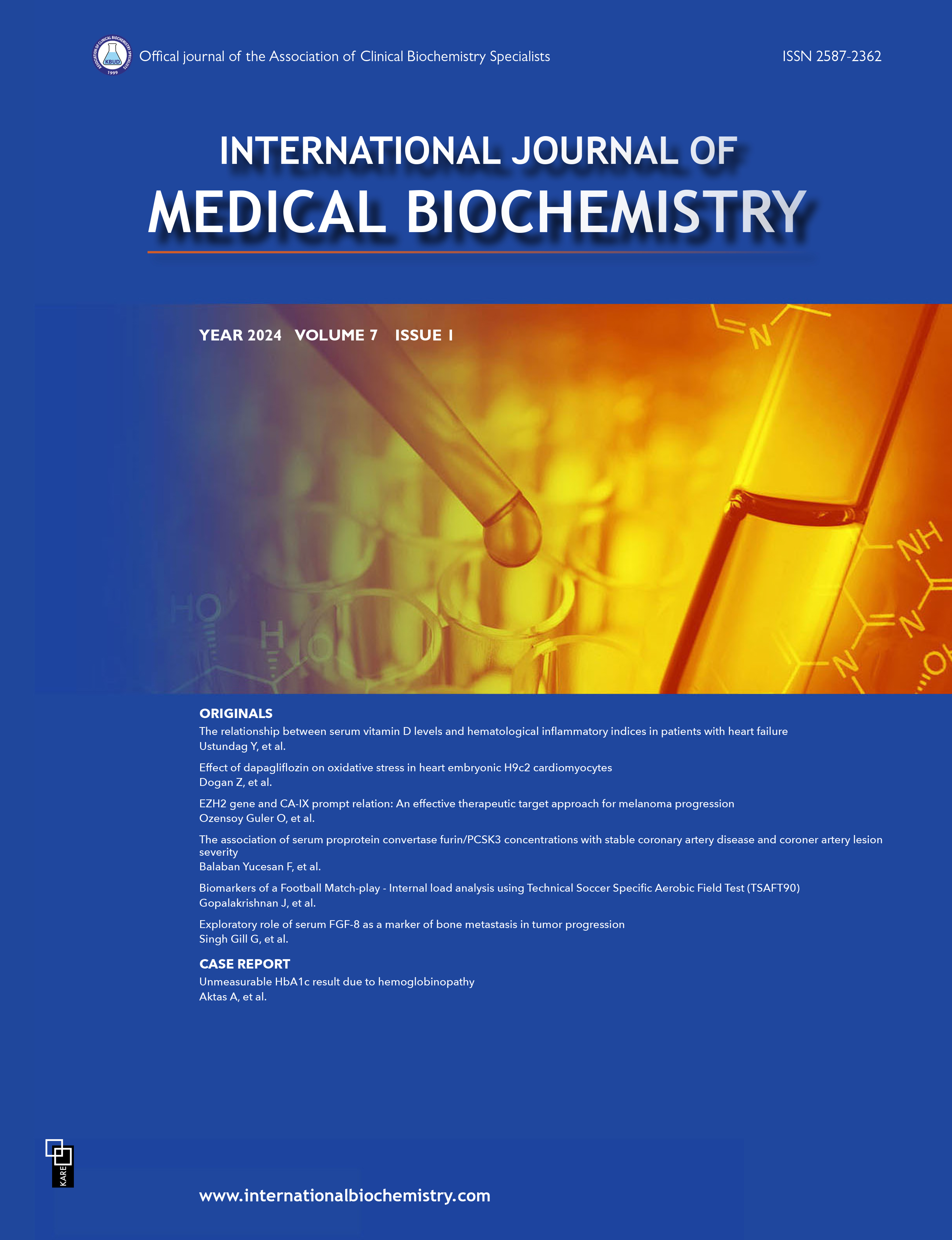Metabolic health status and cardiovascular risk of different ABO blood group phenotypes
Innocent Chidi Anioke1, Charles Arinze Okafor2, Innocent N Okonkwo2, Peculiar Ngozi Kalu3, Blessing Chidimma Okpagu2, Faith Akpah21Department of Medical Laboratory Sciences, Faculty of Health Sciences and Technology, College of Medicine, University of Nigeria Enugu Campus, Nigeria; MSc. Public Health- Health Promotion, School of Health and Wellbeing, Faculty of Health and Social Science, Leeds Beckett University, Leeds, United Kingdom2Department of Medical Laboratory Sciences, Faculty of Health Sciences and Technology, College of Medicine, University of Nigeria Enugu Campus, Nigeria
3Department of Chemical Pathology, College of Medicine, Nnamdi Azikiwe University, Nnewi, Nigeria
INTRODUCTION: ABO blood group antigens could play a role in the pathogenesis of cardiovascular disease (CVD). This study examined the metabolic health status (MHS) and CVD risk of apparently healthy individuals from across the ABO blood group system.
METHODS: Demographic details as well as anthropometric and biochemical data were collected in a cross-sectional survey from 120 participants of different ABO groups (range: 18-70 years). Height, weight, and waist circumference were measured using standard procedures. Body mass index was calculated as weight divided by height squared (kg/ m2). A blood sample of approximately 5 mL was collected after an overnight fast. Fasting blood glucose was estimated using a glucometer. The blood group was determined using a monoclonal ABO blood grouping reagent. Direct enzymatic methods and a commercial kit were used to measure the level of total cholesterol (TC), triglycerides, and highdensity lipoprotein. Low-density lipoprotein (LDL) and very low-density lipoproteins were estimated using the Friedewald equation. Metabolically healthy (MH) and metabolically unhealthy (MUH) individuals were identified based on the presence of metabolic syndrome using the Joint Interim Statement criteria. CVD risk was determined using the Systematic Coronary Risk Evaluation chart.
RESULTS: Females showed significant differences in TC across the ABO system: The O group (mean±SD: 4.85±0.77 mmol/L) demonstrated a significantly higher TC level compared with the A group (mean±SD: 4.22±0.72 mmol/L; p=0.015). The LDL in females was also significantly higher in the O group samples (mean±SD: 3.06±0.75 mmol/L) compared with the A samples (mean±SD: 2.53±0.62 mmol/L; p=0.042). There was no significant difference between the MUH and MH groups based on ABO blood phenotype (p>0.05). The CVD risk among those with the O phenotype (51.7%) was significantly higher than in the non-O blood groups among male subjects (χ2=6.213; p=0.045).
DISCUSSION AND CONCLUSION: MHS was not associated with the ABO system, but there is a possibility that male members of blood group O are more susceptible to CVD than men with non-O phenotypes.
Corresponding Author: Innocent Chidi Anioke, Nigeria
Manuscript Language: English



















